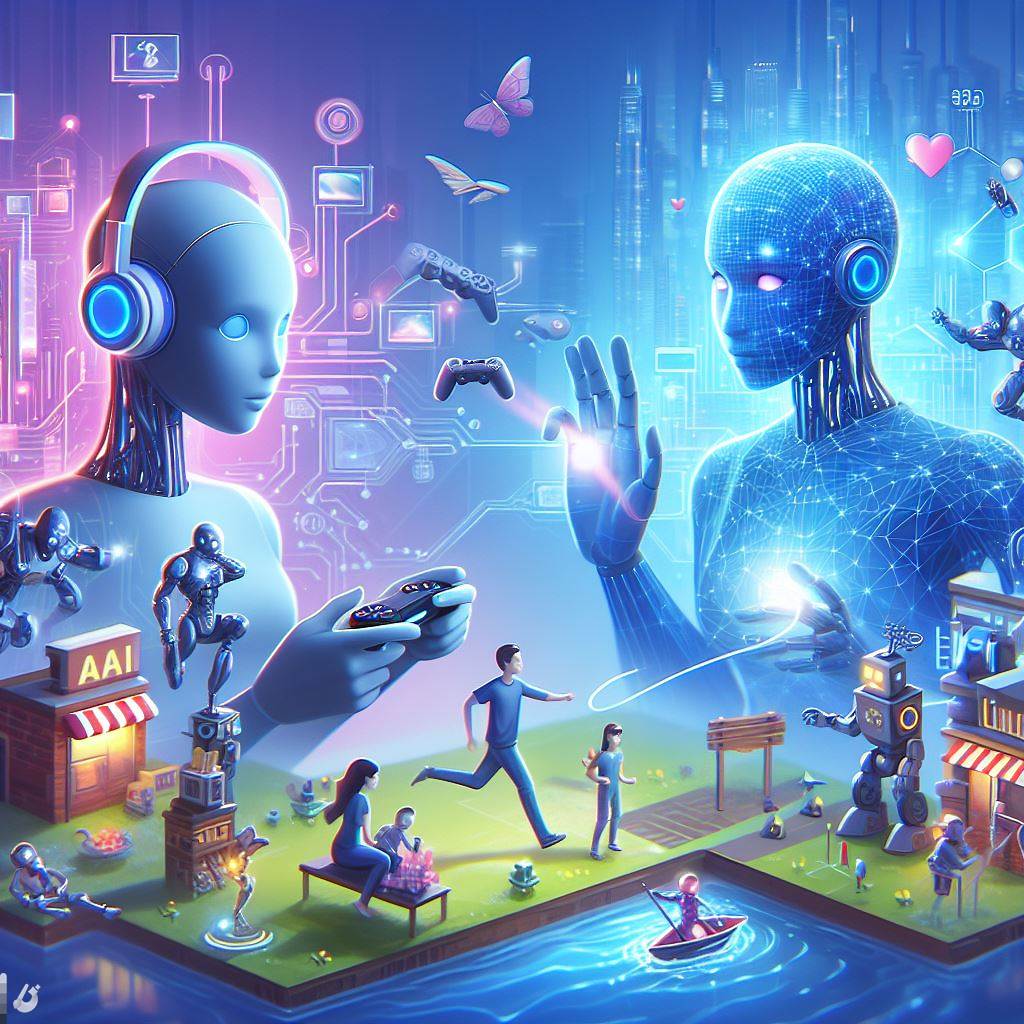The gaming industry is one of the most innovative and dynamic sectors in the world, constantly pushing the boundaries of technology and creativity. One of the key drivers of this innovation is artificial intelligence (AI), which is transforming the way games are designed, developed, and played. In this blog post, we will explore some of the ways that AI is revolutionizing the gaming industry with realistic graphics and gameplay.
AI-powered gaming engines
Gaming engines are software frameworks that game developers use to create and develop video games. They provide tools, libraries, and frameworks that allow developers to build games faster and more efficiently across multiple platforms, such as PC, consoles, and mobile devices. AI is revolutionizing game engines by allowing for the creation of more immersive and dynamic environments. Rather than manually coding a game engine’s various components, such as the physics engine and graphics rendering engine, developers can use neural networks to train the engine to create these components automatically. This can save time and resources while creating more realistic and complex game worlds. Additionally, AI-powered game engines use machine learning algorithms to simulate complex behaviors and interactions and generate game content, such as levels, missions, and characters, using Procedural Content Generation (PCG) algorithms. This helps developers create more diverse and interesting games with less effort. AI can also optimize game performance and balance game difficulty, making the game more engaging and challenging for players. One example of an AI-powered game engine is GameGAN, which uses a combination of neural networks, including LSTM, Neural Turing Machine, and GANs, to generate game environments. GameGAN can learn the difference between static and dynamic elements of a game, such as walls and moving characters, and create game environments that are both visually and physically realistic.
AI-enhanced gaming characters
Another area where AI is having a significant impact is in the creation and control of game characters, especially non-player characters (NPCs). NPCs are characters that are not controlled by the player, but by the game itself. They can interact with the player and the game world in various ways, such as providing information, assistance, or opposition. AI is enhancing game characters by making them more intelligent, realistic, and dynamic. For example, AI can use natural language processing (NLP) to enable NPCs to understand and respond to player requests, or to generate dialogue and voice acting that are appropriate for the context and the character’s personality. AI can also use reinforcement learning to enable NPCs to learn from their own actions and the feedback from the player and the environment, and to adapt their behavior accordingly. This can make NPCs more autonomous and unpredictable, adding to the immersion and challenge of the game. AI can also use computer vision and deep learning to create realistic and expressive facial animations and body movements for game characters, based on real human data or generated from scratch. This can make game characters more lifelike and emotional, enhancing the player’s connection and empathy with them. One example of an AI-enhanced game character is Ellie, the protagonist’s companion in The Last of Us, a survival horror game. Ellie is able to react to the player’s actions and the game events in a natural and realistic way, using a combination of scripted and dynamic behaviors. She can also communicate with the player using facial expressions, gestures, and voice cues, creating a strong bond between the player and the character.
AI-generated gaming environments
Another way that AI is revolutionizing the gaming industry is by creating realistic and diverse game environments. Game environments are the settings and landscapes where the game takes place, such as forests, cities, or dungeons. They are an essential part of the game experience, as they provide the backdrop and the context for the game story and gameplay. AI is generating game environments using various techniques, such as PCG, neural style transfer, and generative adversarial networks (GANs). PCG is a method of creating game content algorithmically, rather than manually. It can create game environments that are infinite, varied, and adaptive, based on the game rules and the player’s preferences. Neural style transfer is a technique that can apply the style of one image to another, such as transforming a photo into a painting. It can create game environments that are stylized and artistic, based on the game genre and theme. GANs are a type of neural network that can generate realistic images from noise, such as faces, animals, or landscapes. They can create game environments that are photorealistic and detailed, based on the game setting and mood. One example of an AI-generated game environment is No Man’s Sky, a sci-fi exploration game. No Man’s Sky uses PCG to create a vast and diverse universe of over 18 quintillion planets, each with its own unique flora, fauna, and terrain. The game uses neural networks to generate realistic and varied textures and colors for the planets, as well as to create realistic and dynamic weather and lighting effects.
Conclusion
AI is revolutionizing the gaming industry with realistic graphics and gameplay, creating more immersive and interactive experiences for players. AI is enabling gaming developers to create more innovative and diverse games with less effort and cost, as well as to provide players with more personalized and adaptive gameplay. As AI technology continues to advance, we can expect to see even more amazing and groundbreaking applications of AI in the gaming industry in the future.
Also Read: AI vs. Humans: Who is the ‘Apex Species’?
